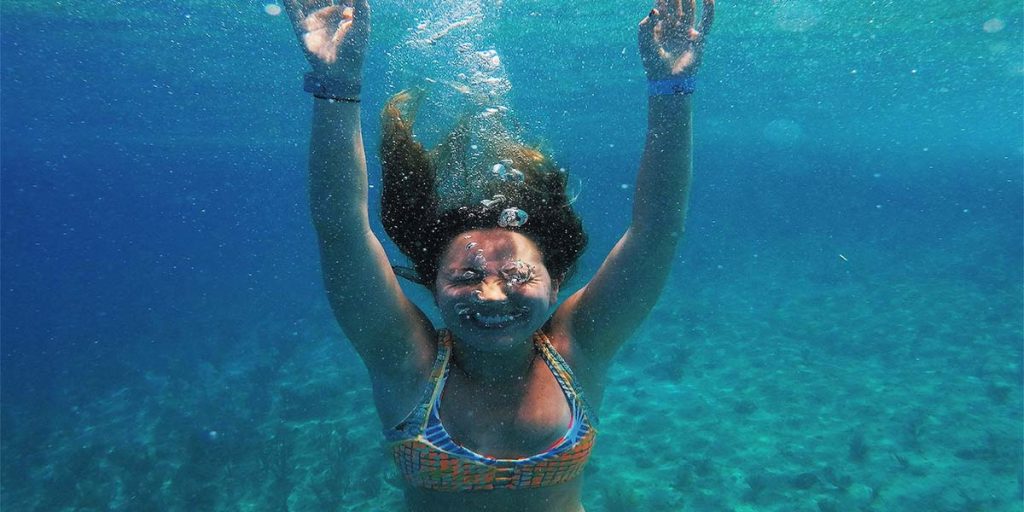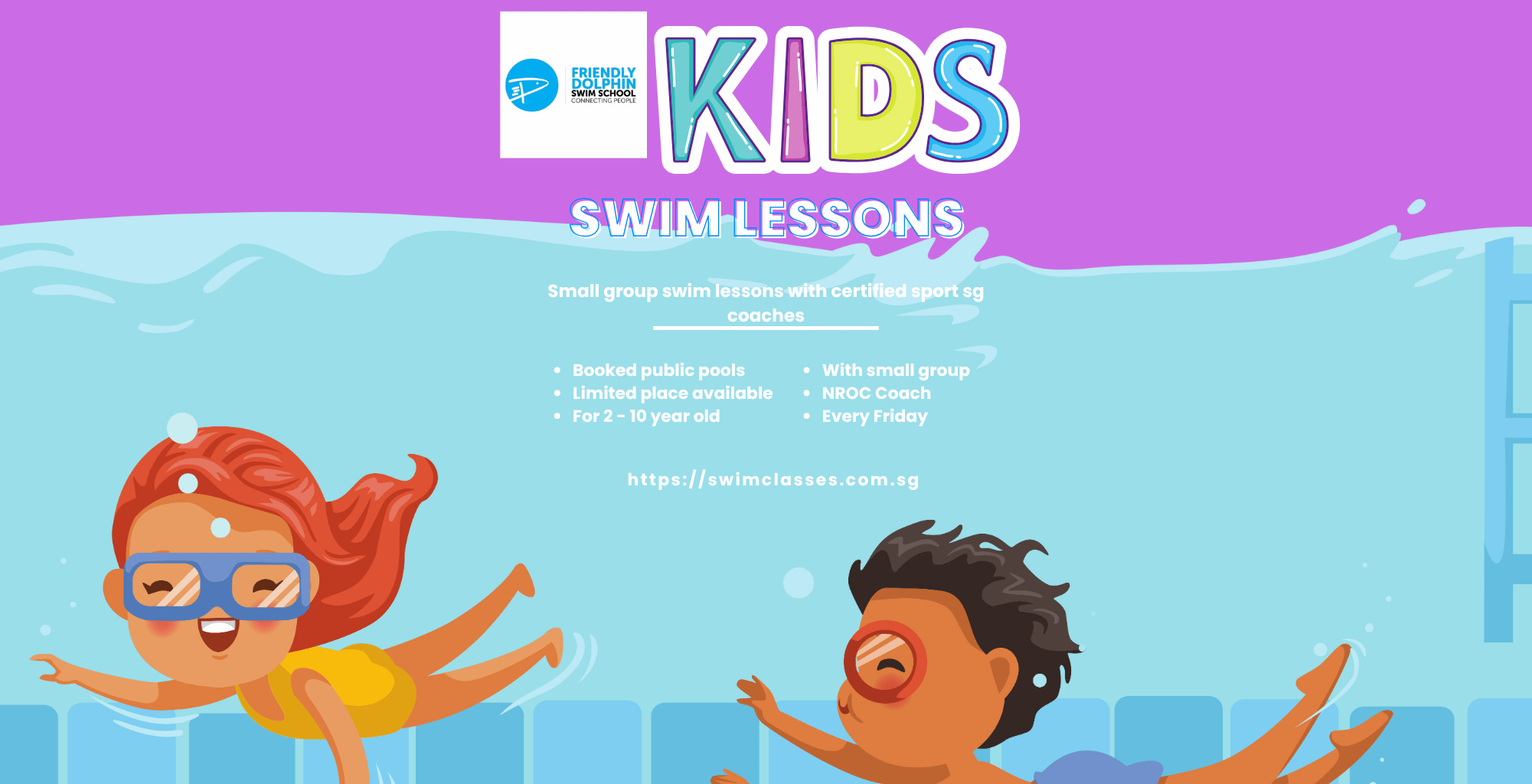Prevent Drowning By Learning How To Blow Bubbles Underwater

We all know that it is dangerous for humans to inhale water as we breathe air.
We breathe the air, and this instinct comes naturally to us; when we exhale, our body naturally tells us to do what comes next like inhaling air.
Our lungs would not be able to process any oxygen out of the water even if it was there. Basically, there is no air in the water for us to breathe, so it can’t happen in the water, I am sure you know this?
When a person goes underwater for too long, struggles for air, and doesn’t know what to do, the body will start to do what comes naturally (inhale). There is no time for them to surface and inhale. When this person swallows and aspirates (meaning to take in water into the respiratory system), they will be at risk of drowning.
It is a good practice for swimmers, non-swimmers to learn how to breathe correctly in the water. Many new or non-swimmers, when first go into the pool, hold their breath, a natural reflex to keep the water out of the lungs. But holding breath instead of relaxing the body tense the body up and leads to many tensions, which is not suitable for new, novice swimmers in this situation. We encourage all our students to learn to control their breath and breathe the best way in the water early on; this will improve and reduce the risk of drowning with the right technique to breath control.
We teach techniques such as bubbling (blowing bubbles in water) during our swimming lessons. When you swim, you will learn to inhale (breathe in the air) through your mouth when your face is above the water, exhale (blow out air or bubbling) to exhale through your mouth or nose when your face is underwater.
Improper breathing isn’t just a novice or beginner kind of thing. Swimmers at intermediate, advanced, or expert levels make mistakes like this too. They do not possess the right and proper breathing technique, often holding their breath and causing themselves a lot of unnecessary tensions.
This is important because exhaling and inhaling properly makes your swimming relaxed – and therefore better.
Building Tension and Excess Carbon Dioxide
Tension is a swimmer’s enemy and if you hold your breath, your body naturally begins to tense up. This deficiency of oxygen is matched by an increase in carbon dioxide in your lungs and bloodstream. This combination of circumstances triggers desperation to take a breath.
If you exhale a steady stream of bubbles while swimming, the carbon dioxide doesn’t build up in your system and you won’t feel the anxiety to take a breath. Trying to inhale and exhale while your head is above water just squeezes too many actions into one short window.
Get Comfortable With Bubbles
There is an exercise to help you grow more comfortable breathing bubbles underwater.
Bobbing with It
If you bob (where you sink underwater and slowly exhale a stream of bubbles through your nose and mouth) it gives your body a way to grow familiar with breath control. Upon returning to the surface, you inhale and sink back into the water and exhale again.
According to Olympic swimmer Janet Evans’ book “Janet Evans’ Total Swimming,” Evans used an exercise where she hung on to the pool’s edge, inhaled deeply, and then submerged her head and body underwater. She then would blow the air out of her nose, emptying her lungs via bubbling before she surfaced. This is a simple yet effective way to learn to bubble.
Sinking To The Bottom
The next stage after bobbing is to learn how to sink and stay at the bottom of the pool – while you’re exhaling bubbles, of course. By growing comfortable with being underwater, you can help yourself overcome the natural instinct to tense up.
Begin this exercise by treading water at the deep end of the pool and exhaling the air out of your lungs. Relax the muscles in your body, imagining that you’re settling into a cushioned sofa. Allow yourself to sink straight down in a slow and controlled manner while you continue to exhale. When you reach the bottom of the pool, exhale until you need to take a breath. Rise to the surface – still holding your breath – and inhale after your head breaks the surface and your nose and mouth are clear of the water.
Practice sinking several times.
Sitting Bubbles
Do you want to advance your bubbling exercise even more?
Try sitting or lying on your back on the bottom of the pool while blowing out bubbles.
Blowing Bubbles Teaches Exhaling
Blowing bubbles out of your mouth is the precursor to exhaling underwater. Basically, whenever your face is in the water, you want to exhale constantly and smoothly. Exhaling releases any tension that your body has built up and helps your body to keep from tensing up anymore. You can exhale through your mouth or through your nose or both. Try to make a smooth constant stream of bubbles.
There is a rhyme that helps you remember the best breathing technique: Blowing bubbles will end your troubles.
Swimming Breathing Tips
So we know from the above information and needless to say, swimming instructors will always instill a lot of blowing bubbles into swimming lessons to teach breath control.
When swimming instructors teach children how to swim, there are four main skills they must make sure that they have learned before anything else. In order to be able to swim competently, a child must be taught about buoyancy, submersion, balance, and breath control.
Of the four skills, breath control is without a doubt the most crucial skill a child must learn in order to safely enjoy swimming. There are a variety of ways to make sure that these lessons sink in properly.
The easiest way to begin teaching a child about breath control is through the process of blowing bubbles in the water. When they are in the tub at home or at a pool, the next time your child is floating in the water, have them blow bubbles into it.
This not only teaches students about breath control, but it also guides them on submersion. They will learn and know what to do with their mouth and nose inside under the water.
Blowing bubbles like this have other benefits as well. It gets children accustomed to the sensation of needing to come up for air after being submerged and the best way to do so.
Another way to start teaching your child about breath control is by using the game bobbing for apples. Bobbing for apples is a game in which the participants fill a large tub or basin with water, and then put apples into the water to float around.
The participants then have to remove the apples from the tub while using only their mouths and teeth. By teaching your children how to play this game, they will also learn how to hold their breath in the process. They will also become accustomed to multitasking in the water, holding their breath while also
performing other tasks.
Yet another method of teaching your young children about how to control their breathing is by having them dive for rings. It is a common sight at any beach or local neighborhood pool, of children playing with rings and dive sticks, retrieving them from deep under the water.
Diving for rings is a fun activity for groups of children to entertain themselves with, which also helps them learn better breath control simply by participating.
This method is only suitable for children who are already comfortable swimming in the water, and who have some degree of experience with complete submersion.
One last method of teaching a child about proper breath control is the simplest of any other method, just having them practice outside of the water. This allows you to help your child improve the skills they need to be strong swimmers without actually putting them in any danger of drowning.
By presenting this idea to them as some kind of fun game or competition, you can trick your child into practicing their breath control wherever you are.
Merely having them do things like see how long they can hold their breath can be valuable practice and a fun way to practice their swimming skills.


